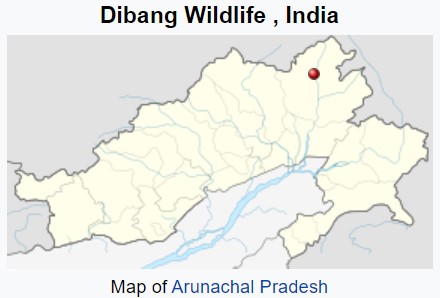Contents
- Clarifying LAC could create new disputes: Chinese envoy
- PLA holds drills in Tibetan plateau
- Gandhi-King Initiative Passes U.S. House Committee
- Supreme Court looks to save both wild animals and crops
- 29 tigers present in Dibang block
CLARIFYING LAC COULD CREATE NEW DISPUTES: CHINESE ENVOY
Focus: GS-II International relations
Why in news?
- China was not in favour of resuming the process of clarifying the Line of Actual Control (LAC) because it could “create new disputes”, its Ambassador to India said.
- The ambassador said While the Foreign Ministry said earlier this week border troops “completed disengagement in most localities”, defence sources said it had only been “partial” in some spots, such as Patrolling Point 17A in Gogra-Hot Springs and Pangong Lake.
Details: Complete disengagement is Incomplete
- The complete disengagement is yet to happen and this matter is expected to be taken up at the fifth round of talks between the Corps Commanders of both armies
- The Ministry of External Affairs (MEA) said “there has been some progress made” towards complete disengagement along the LAC, “but the disengagement process has as yet not been completed”.
- China’s Defence Ministry said the situation “tends toward de-escalation and the disengagement between the border troops of the two countries is being gradually carried forward.”
- While the Foreign Ministry said earlier this week border troops “completed disengagement in most localities”, defence sources said it had only been “partial” in some spots, such as Patrolling Point 17A in Gogra-Hot Springs and Pangong Lake.
-Source: The Hindu
PLA HOLDS DRILLS IN TIBETAN PLATEAU
Focus: GS-II International Relations
Why in news?
China’s People’s Liberation Army (PLA) has held “long-range precision” strike drills on the Tibetan plateau bordering India and flown latest jet bombers over the South China Sea (SCS) amid ongoing border friction with New Delhi and rising tension with the US over disputes with littoral countries in SCS region, the Chinese defence ministry said.
Introduction
- The Tibet military region, which borders India and is under the western theatre command in-charge of the boundary with India, has taken part in drills testing the PLA troops’ and armaments’ “long-range precision strikes”, defence ministry of China said.
- The above exercises are part of the annual training plan and are not targeted at any specific country.
Tibet Military District
The Tibet Military District is a military district of the People’s Liberation Army Ground Force.
In the 1960s it became part of the Chengdu Military Region.

Concerns
- The drills were held amid the ongoing border tension with India along the Line of Actual Control (LAC) in Ladakh even as both sides are involved in negotiations to disengage troops.
- Several rounds of diplomatic and military talks have been held between the two countries but the disengagement is yet to be completed.
- China claims almost all of the energy-rich South China Sea (SCS) – a major trade route. The Philippines, Brunei, Vietnam, Malaysia and Taiwan have overlapping claims.
The U.S. Factor
- The US according to a Chinese academic think tank has conducted six Freedom of Navigation Operations (FONOPs) so far in 2020 (the most in the past few years).
- In addition, the U.S. military has conducted nearly 2,000 close-in reconnaissance operations on China from the air in 2020.
Click Here to read more India and US conducting naval exercise
-Source: The Hindu
GANDHI-KING INITIATIVE PASSES U.S. HOUSE COMMITTEE
Focus: GS-II International relations
Why in news?
A bill which seeks to establish an exchange program between India and the U.S. to study the work and legacies of Mahatma Gandhi and civil rights leader Martin Luther King Jr., passed an important Committee in the U.S. House of Representatives.
Details
- The bill will establish annual scholar and student exchange programs for Indians and Americans to study the leaders’ legacies and visit historic sites in India and the U.S., relevant to the India’s freedom struggle and the U.S.’s civil rights movement.
- The bill also seeks to establish the Gandhi-King Global Academy, a conflict resolution initiative based on the principles of nonviolence.
- It proposes the establishment of the United States-India Gandhi-King Development Foundation set up by the U.S. Agency for International Development (USAID) and the government of India, organized under Indian law.
- The bill will need to be voted through the House and Senate before it becomes law.
-Source: The Hindu
SUPREME COURT LOOKS TO SAVE BOTH WILD ANIMALS AND CROPS
Focus: GS-III Environment and Ecology, Prelims
Why in news?
Supreme Court accentuated the urgent need to find an alternative to killing marauding wild animals as vermin even while protecting crops from them.
Details
- Chief Justice of India heading a three-judge Bench, suggested “explosives that do not kill” but make a lot of noise and “rubber bullets” to scare off the animals.
- The court was hearing a petition seeking measures to prevent killing of wild animals in India.
- Issuing a notice, the court tagged the petition with an earlier one on an elephant who died after consuming pineapples laced with explosives in Kerala.
- CJI said man-animal conflict is leading to both killing of wildlife and crop loss.
Vermin?
- ‘Vermin’, described as a ‘noxious animal’, etymologically means worms. This meaning was later extended to other wild animal species — and even humans.
- Legally, The Wild Life (Protection) Act (WLPA), 1972, states that ‘vermin’ is any wild animal that is specified in its Schedule 5.
- Section 62 tells us that GoI can notify any wild animal as vermin, for a specific period and a specific area, and include it in Schedule 5.
- Permanent inhabitants of Schedule 5 include the common crow, fruit bats, mice and rats.
- States can send a list of wild animals to GoI to be declared as vermin for selective slaughter (culling). In select states, for instance, wild boar, wild elephants, nilgai, rhesus monkey and peacock fall in this category.
Is the Criteria for Vermin clearly defined?
- States do NOT have clearly defined criteria for declaring wild animals as vermin.
- This is despite an environment and forests ministry advisory requirement.
- As soon as farms and human lives around a forest area are threatened, there is a tendency to declare a wild animal as vermin.
How easy is it to declare an animal as a vermin?
Section 11(b) states, ‘The chief wildlife warden or the authorised officer may, if he is satisfied that any wild animal specified in Schedule 2, Schedule 3, or Schedule 4 has become dangerous to human life or to property (including standing crops on any land), or is so disabled or diseased as to be beyond recovery, by order in writing and stating the reasons therefor, permit any person to hunt such animal or cause such animal to be hunted.
How are vermin handled?
One of these four criteria must be met:
- Only forest officials can kill ‘The Vermin animal’.
- Anyone can kill ‘The Vermin animal’, but only by shooting, and only licensed firearm-owners can do this.
- A farmer who kills ‘The Vermin animal’ will be given ₹1,000 per kill, thereby incentivising killing, with a trader driven demand for ‘The Vermin animal’ meat existing in any case.
- Anyone can kill ‘The Vermin animal’ through any means, including snares.
The primary issue
- One presumes certification (about the area where killing is permitted) is enforceable.
- A person who shoots can, hopefully, distinguish between a wild boar and a wild elephant.
- But a snare, or cracker-filled fruit, is ‘anonymous’, and the animal does not know that this is geotagged and meant for a wild boar that was declared as ‘vermin’.
Conclusion
- More importantly, this solution to the man-animal tension solves nothing, and can lead to not only undesirable, but unintended, consequences on the ecosystem.
- Population pressures have heightened the man-animal tension.
- Traditional farmers probably had a better handle on dealing with it.
- It is the advent of commercial farming and larger estates that have tilted the scales, failing to distinguish between an animal and its actions.
-Source: The Hindu
29 TIGERS PRESENT IN DIBANG BLOCK
Focus: GS-III Environment and Ecology, Prelims
Why in news?
An estimated 29 tigers were present in Arunachal Pradesh’s Dibang-Kamlang-Namdapha Block, according to the Status of Tigers, Co-predators, and Prey in India report (2018).
Significance
- The estimation comes amid concerns about the proposed diversion of large forest areas around Dibang Valley Wildlife Sanctuary for a power project and a dam, which experts say will impact both the tigers and their prey.
- The 3000+ MW Etalin Hydropower Project will impact more than 1000 hectares and the Dibang Multipurpose Dam and more than 4500 hectares in the unclassified state forests and other community lands.
- Dibang Valley holds unique importance for in-situ conservation of this “unique and genetically diverse lineage of tigers” as the local aboriginal community of Idu Mishmis considers tigers as their elder brothers.
- The 2018 estimation has recommended discussions with Idu Mishmis before proceeding with any notification of the sanctuary as a tiger reserve.
- Some of the prey cross the Talon river or are found in abundance along the river like the Mishmi Takin.
Other important Highlights
- The 2018 NTCA report said Arunachal Pradesh has large contiguous forests over 136,000 km, which include Pakke Tiger Reserves, Tale Valley Wildlife Sanctuary, Mouling National Park, D’Ering Wildlife Sanctuary, Mehao Wildlife Sanctuary, Dibang Wildlife Sanctuary, and Kamlamg and Namdapha Tiger Reserve.
- The report added the 1,811 km Trans Arunachal Highway will become a barrier for the movement of the wildlife species in several of these corridors.
Dibang Wildlife Sanctuary

- The Dibang Wildlife Sanctuary is one of the eight wildlife sanctuaries of Arunachal Pradesh, India.
- Dibang Wildlife Sanctuary is located fully or partly within Dihang-Dibang Biosphere Reserve.
- Rare mammals such as Mishmi Takin, Red Goral, Musk Deer (at least two species), red panda, Asiatic black bear, occasional Tiger and Gongshan muntjac occur while among birds there are the rare Sclater’s monal and Blyth’s tragopan.
Click Here to read more about the Tiger Survey report
-Source: Hindustan Times



